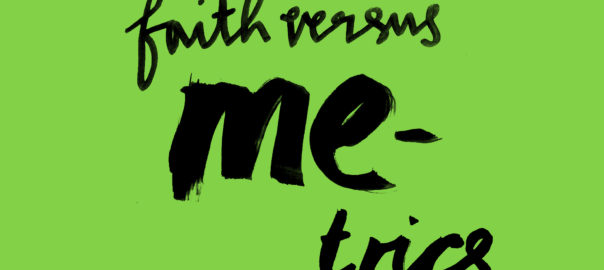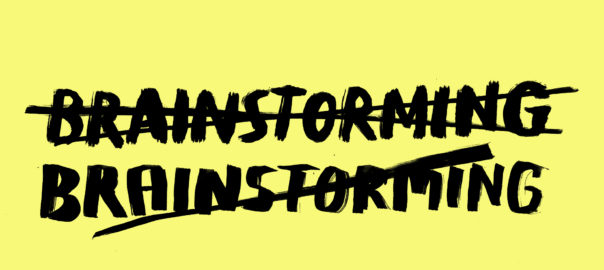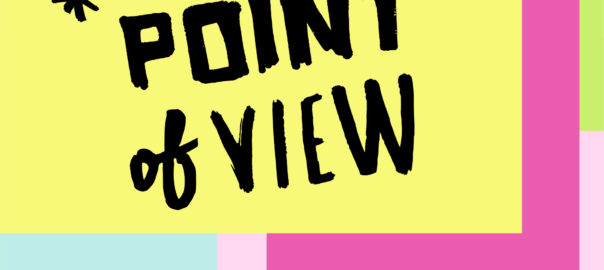Internal vs external agencies: How should it work?
Research has shown that client–agency relationships are experiencing turbulence. Much of this stems from the demarcation between internal and external teams, which is increasingly blurred and constantly evolving. We took up the debate with Joanna Williams— representing the client side—to thrash out how it should work.
JW:
My first question is what do we really mean by internal agencies? What functions should they perform? Creative? Media? Digital? Brand? Strategy? All of these? I think too often internal agencies are just seen as design studios.
RG:
Remit is interesting. A connected question is: what are clients seeking to achieve by developing in-house capabilities? Cost savings have to be part of the equation. Service is another motivation. Having people on-site under a client’s sole control should improve responsiveness. The other important aspect is quality and I suspect this is where it’s less clear-cut. There are examples of internal agencies delivering great work—4Creative, M-Four, Specsavers and the Government Digital Service spring to mind—but do you think quality is as high across the board?
JW:
I think this is why many clients go down the hybrid route. They seek to benefit from a balance of internal and external resources. The digital and social worlds demand the agility to respond in close to real time. This is where internal resources really come into their own. But most clients recognise there are higher-end skills they need to buy in, ad hoc, to complement the day-to-day capabilities they have in-house, such as brand positioning or strategic thinking.
RG:
When clients go down that route I think the people issues become an important consideration. All parties need to work well together, but crucially everyone needs to be motivated. If clients adopt this approach and outsource higher-end work do you think the creation of a glass ceiling for internal creatives causes a problem?
JW:
The challenge is, if your motivation is cost savings and efficiencies, then your primary objective for internal resources is getting through volume. Ads, banners, internal posters and let’s not forget prettying up endless PowerPoint presentations—it all needs to be done, which doesn’t leave much time for creating the next big idea. In reality, rarely does an in-house team want to just churn out artwork. The key to managing this is demarcation of roles between internal and external resources. The word “creative” in itself can be deceiving. Often the client is really asking for the idea. The process by which this is handed over to the internal team is crucial and, if done well, can give them scope to get involved with the higher-level tasks.
RG:
We’re often brought in to work with internal studios in the way you describe. On two recent projects we’ve been asked to go further than strategy, but not as far as what we’d traditionally have called a creative idea. Essentially we’ve provided a creative idea but expressed through words rather than visuals. I’d describe it as a creative narrative. Their internal teams have then taken this and translated it into visuals ideas for all the components of the campaign. I think this can work well but it does have implications for the client–agency relationship. Essentially it becomes more project-based and more consultative. I’m a big believer that the best relationships are long term and built on a mutual commitment. As the nature of relationships change it’s important not to undermine this.
JW:
I agree. I also think there are many issues at the moment that are making client–agency relationships challenging. Marketing budgets are becoming more fluid to accommodate changes in needs and activity. Therefore, overcommitment to long-term spend can prove difficult. There’s a reluctance to go through comprehensive pitch processes or detailed briefings for every piece of work. These were the bedrock of choosing and committing to long-term relationships. Trial and error is much more common with agency relationships. On the agency side, specialisms are fragmenting, which creates the need for more relationships. Equally marketing departments are becoming fragmented, sometimes split by distribution channel, brand, product, or communication discipline. This results in lots of budget holders wanting to maintain their own agency relationships.
RG:
In my experience one of the major implications of having these more fragmented relationships— and this goes back to the quality point— is the lack of consistent creative direction for the brand. When clients had lead advertising agencies, the agency creative director often played this crucial role, working closely with the marketing director. But one of the crucial aspects of this was end-to-end involvement in the creative process. Sir John Hegarty once said, “great work is 80% idea and 80% execution”. Can this happen when you essentially separate responsibility for the idea and the execution between internal and external teams?
JW:
This is where the question starts to become: how important is great creative these days? Quarterly campaigns that need to deliver numbers may not need big ideas or the highest quality creative—sometimes good is good enough. As budgets get spread more thinly over a wide range of activity there isn’t the same amount available to invest in any one element—either the thinking or production. Given the short shelf life of most campaigns these days, a business wants to get some value from their investment, so has think about the longevity. KPIs, ROI and budget management have become the main topic of meetings and management decisions, so you can see why some Marketing Directors may not see creative as the main priority.
RG:
I think this is where creative is too often seen as something fluffy rather than commercial. I recently saw some research from the IPA that found short-termism and budget pressures have cut the effectiveness of campaigns in half (“Selling Creativity Short”, June 2016). We need to re-establish that the reason for creativity in our business is to deliver greater returns. The challenge to all of us is to find a way in which creative quality, and therefore effectiveness, can be maintained within new ways of working. I think cracking the question of who the Creative Director should be is central to this.
JW:
It’s interesting that some Marketing Directors become the de facto Creative Directors as they are the common touchpoint between internal and external agencies. To be honest I don’t think this is the skill set of marketing departments and most have probably fallen into it rather than actively creating this situation. I respect and admire Marketing Directors that invest in a creative lead within their organisation. Having said that, too often these roles are really about brand guardianship—policing the identity —as opposed to having full responsibility for creative direction. I think many clients will continue to look outside their organisations for this role, but creating the right long-term relationship is vital if it’s to work.
RG:
Staying on the quality and effectiveness point, another important issue is how close the creative team should be to the brand. In my experience, maintaining some distance from the business, and all the internal issues that can bog people down, is essential to great work. Equally, having a broader range of experiences to draw on is important. Distance is also important in terms of the relationship. Sometimes you need to work all night to crack an idea. In the morning you’ll present it to the client and they’ll say it’s not right. As an agency leader you have to pick the team up and get them going again. Without this separation, when you’re all part of the same team, it can be harder to have such brutal and honest conversations. These are essential though.
JW:
The key word here is perspective. In my role as a consultant I find that this one attribute is perhaps the most powerful and useful in terms of seeing the issues and generating impact. At times you have to be outside a business to be inside a business. The environment and culture that creatives desire is another aspect that clients can find it hard to offer, though they do try hard.
RG:
There’s an interesting company called Oliver who’ve developed a way to deal with this. Essentially they set up and manage an agency that sits within the office of the client they are working for. This seems like an interesting proposition because it gives clients better value and responsiveness, but allows the agency team to maintain a slightly different perspective and culture from the marketing team, who are ingrained within the business. This is an idea I’ve mooted to clients before but it’s never really got off the ground. How do you think clients perceive this proposition?
JW:
I can see how this can be uncomfortable for clients. They probably had to work hard to secure a budget and headcount for the in-house resource, and had to present a business case for cost savings. As such, to hand over that function externally could be seen to compromise the objective.
RG:
So perhaps that particular model will be right for some but not others. I guess that’s the theme here really. There is no silver bullet. It’s clear that there’s a lot to think about in terms of agency relationships as we adapt to a rapidly changing communications landscape. I think both clients and agencies will evolve their offerings and as they do so an open and honest dialogue will be vital to making it work well for both parties. At the end of the day I guess it’s all about people. It doesn’t really matter whether they’re internal or external: the key to success will be creating the structures, processes, relationships, cultures and environments for everyone to work together effectively.
— JW & RG
This article was based on a discussion with Joanna Williams. Joanna has a broad UK and European experience having held senior marketing and strategy positions at MBNA, Bupa, Brother, BPP and Hansgrohe. She now offers independent consultancy.







